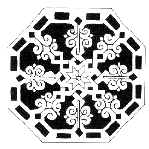|
|
Khorasan consists of two words, "Khor" and "Asan", means "rising sun" which is "Matla-o-shams" in ancient texts ( where sun rises ). This land, in old time was a vast and thriving country and during centuries was divided into various parts owing to wars, and incapability of governors; so some parts of this land is placed in Russia or Afghanistan. Actually Khorasan is a small part of the old Great Khorasan.
This province is one of the most important centers of carpet weaving in Iran; and this industry has a very special prominence. One may realize this prominence by estimation of number of labors and weavers which amount to 140000, working in this field of industry in Khorasan.
Carpet weaving of Khorasan has seen its most flourishing era in 1500 years, during The Kingdom of Shahrokh Mirza Teymourid dynasty Herat, Capital city of this dynasty; known as a city of Artists and Miniaturists, was active in every branch of Art, specially carpet weaving. This art, after flourishing period, at the end of Safavid era started to decline, drastically as far as the end of Qajar dynasty.
Nowadays, art of carpet weaving is indebt to Tabriz' merchants who established many carpet weaving workshops and encouraging carpet weavers of Tabriz to move to Khorasan for advancement of this ancient profession.
Since those days, designs and techniques of Azerbaijan carpets were prevalent in Meshed by artisans who had resided in that holy city (Khorasan center), owing to their religious sentiments as well as professional interests.
Wool, needed for carpets of Khorasan was mostly provided from cattle raisers in north of province, such as Torbat, Neishabour, Ghouchan and Meshed. Carpets of Khorasan are woven with Turkish and Persian knots.
Some weavers who works on Persian knots, use fraudulous or double knots to save time and material.
Designs mostly used in Khorasan carpets are flower design, corner medallion, overall flower design, vase design, overall, paisley design and the most common is "Herat". Indian style is also highly prevalent in Khorasan carpets. Those designs are exclusively woven by Baluch or Turkmen which will be studied following.
In Khorasan, natural dyes are mostly used. Colors are not extended widely but are limited to red, scarlet, navy blue, turquoise, beige mustard and brown.
Some workshops leave wool for 24 hours in lime water. This wrong method, together with soft quality of wool and monotony of colors are reasons of devaluation of Khorasan carpets. If it was not because high operational value of some workshops such as Amoghli, Makhmalbaf and Khamenei, which have prepared some exquisite carpets to the collection of Persian carpets, Khorasan carpet might stand in a lower class of museum carpets. Herat, which is now a province of Afghanistan, in old Great Khorasan has been a capital city and much favored by many kings. Carpets woven in that country were all called as Herat and this title is still in use.
On those days all products of a province were called after the central city, therefore it is supposed that Herat carpets were made mostly in villages and numerous hamlets of Khorasan.
Designs of Khorasan carpets at the end of 12th and 13th centuries were central medallion, which is in fact a collection of decorative figures and elements in the middle of carpet. Balance between the central medallion and the empty ground was compensated by using a few narrow fringes.
At the end of 19th century, another design consisted of ornamental elements was prevalent, which covered monotonously the entire background. This design imposed necessity of wider or bigger margins, composed of more cadres, mostly red and brown colors over background. This may be a reason for implementation of more margins in eastern carpets, number of the central medallion and its form is variable in connection with the size of carpet, which changes from spherical to lozenge or almond shaped. Those carpets usually have some epigraphs from famous poets of Iran such as Hafiz, but modern epigraphs have ornamental figures.
Grounds of carpets have mostly vases of flowers, upside and downside which have four corners at the sides. Regardless of central medallion and epigraphs, empty ground is decorated with flowers around medallion. Margins have Herat flowers and shrub of flowers, inspired from Keshmir flowers. Hunting ground carpets of Khorasan, having scene of animal hunting such as gazelle, wolf, fox, goat and birds differ from other designs, colors mostly have herbal origin and present some attractive figures.
Wool in these carpets is soft and luminous with a medium length and a short pile. While constant production is in way, there is a tendency to substitute another design called fish design covered the entire surface of Bijar, Senneh, Hamadan and Farahan carpets, organize the margin of most carpets of old Khorasan and a few Minakhani designs.

|
|

